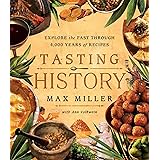The culinary landscape of India is replete with dishes that transcend mere sustenance, serving as living chronicles of history, culture, and innovation. As the accompanying video succinctly illustrates, few dishes embody this rich tapestry quite like Bihari Litti Chokha. Often relegated to the realm of simple regional fare, the profound historical significance and ingenious design of Litti Chokha are frequently overlooked. This deep dive aims to illuminate the extraordinary journey of this iconic dish, tracing its origins from ancient kingdoms to the modern hearth, thereby underscoring its pivotal role in India’s gastronomic heritage.
The Magadhan Genesis: Litti Chokha as Strategic Sustenance
Bihar, a region often underappreciated in contemporary narratives, was once the crucible of one of ancient India’s most formidable and prosperous empires: Magadha. This illustrious kingdom, whose influence stretched across vast swathes of the subcontinent, necessitated robust logistical support, particularly for its formidable military forces. It is within this context that the primordial form of Litti, known simply as ‘baati’, emerged as a strategic culinary innovation.
The soldiers of the Magadh Kingdom required food that was not only incredibly nourishing but also remarkably practical. Baati, a sphere of unleavened dough, baked over an open fire, proved to be an ideal solution. Its dense composition ensured sustained energy release, crucial for the rigors of warfare and long marches. Furthermore, its dry nature meant it could be stored for extended periods without spoilage, a critical advantage in an era devoid of modern preservation techniques. This ingenious “soldier food” was a testament to the practical wisdom embedded in ancient Bihari culinary traditions, optimizing for both endurance and ease of transport.
The Sattu Revolution: From Zampa to Litti’s Core
The evolution of Litti Chokha into its contemporary form is inextricably linked to the advent and integration of sattu. As the Magadh Samrajya expanded its influence, its cultural and trade routes reached as far as Tibet. In this high-altitude region, a staple known as ‘Zampa’ was encountered—a roasted barley flour that offered incredible nourishment and portability. Recognizing its potential, this concept was adapted and refined within India, eventually transforming into ‘Satwa’ and subsequently, the ‘Sattu’ we know today.
Sattu, typically made from roasted Bengal gram flour (chana dal), is a nutritional powerhouse. It is rich in protein, fiber, and essential minerals, making it an ideal ingredient for a complete meal. Its granular texture and inherent dryness meant it could be mixed with spices and easily stuffed into the baati, transforming it from a simple dough ball into a flavor-packed, self-contained meal. The combination of the baked baati and the nutrient-dense sattu filling elevated Litti Chokha beyond basic rations, embedding a philosophy of holistic nourishment into its very core.
From Battlefield Rations to the Common Man’s Hearth
The journey of Litti Chokha from a military staple to a beloved dish accessible to the common populace speaks volumes about its inherent versatility and pragmatic appeal. Imagine a small farming family in rural Bihar, rising at dawn to labor in the fields. Providing them with a meal that would not spoil throughout the day, that required minimal preparation, and that could be cooked using readily available resources was a profound advantage. Litti Chokha fit this criterion perfectly.
Farmers could easily carry these baked dough balls to their fields. For the accompanying ‘chokha’—a mash of roasted vegetables like potato, brinjal, and tomato—they could utilize whatever produce was available from their land. Roasted directly over cow dung cakes or firewood, the vegetables imparted a smoky flavor that perfectly complemented the earthy Litti. This symbiotic relationship between the dish and agrarian life cemented Litti Chokha’s status as a true folk food, nourishing countless generations with its simple yet potent combination.
The Enduring Philosophy: Simplicity and Sustenance
The enduring popularity of any food, particularly one that spans centuries, hinges upon two fundamental attributes: simplicity and nourishment. Litti Chokha exemplifies this principle with remarkable clarity. Its preparation, while specific in technique, relies on basic ingredients and traditional cooking methods that have remained largely unchanged since the 6th century. This simplicity makes it approachable and sustainable, allowing it to transcend socio-economic barriers.
Furthermore, its robust nutritional profile, largely due to the sattu and the wholesome vegetables in the chokha, positions it as a complete meal. It provides essential macronutrients and micronutrients required for strenuous physical activity, making it an energy-efficient and health-conscious choice. This foundational balance of being both ‘poshtik’ (nourishing) and ‘simple’ is the very reason Litti Chokha has not only survived but thrived for over a millennium, weaving itself into the very fabric of Bihari identity and culinary expression. Its timeless appeal underscores the profound wisdom inherent in traditional foodways, which often prioritize efficiency and health without sacrificing flavor or cultural depth.
Litti Chokha’s Cultural Resonance and Modern Reaffirmation
Beyond its historical utility and nutritional benefits, Litti Chokha carries a significant cultural resonance that solidifies its position as a cornerstone of Bihari cuisine. It represents resilience, self-sufficiency, and the ingenious adaptation of resources. In a rapidly modernizing world, where complex and exotic dishes often dominate the culinary spotlight, Litti Chokha serves as a powerful reminder of the value inherent in indigenous, unpretentious food that is deeply rooted in local agrarian practices and historical circumstances.
Today, Litti Chokha is celebrated not only as a rustic delicacy but also as a symbol of Bihari pride, finding its place in urban eateries, roadside stalls, and family gatherings alike. Its journey from a soldier’s ration in the mighty Magadh Empire to a beloved regional specialty underscores a universal truth: true culinary masterpieces are often those that best serve the fundamental needs of a people across time. The enduring legacy of Litti Chokha continues to speak volumes about the rich, often untold, gastronomic heritage of Bihar, offering a taste of history with every wholesome bite.











